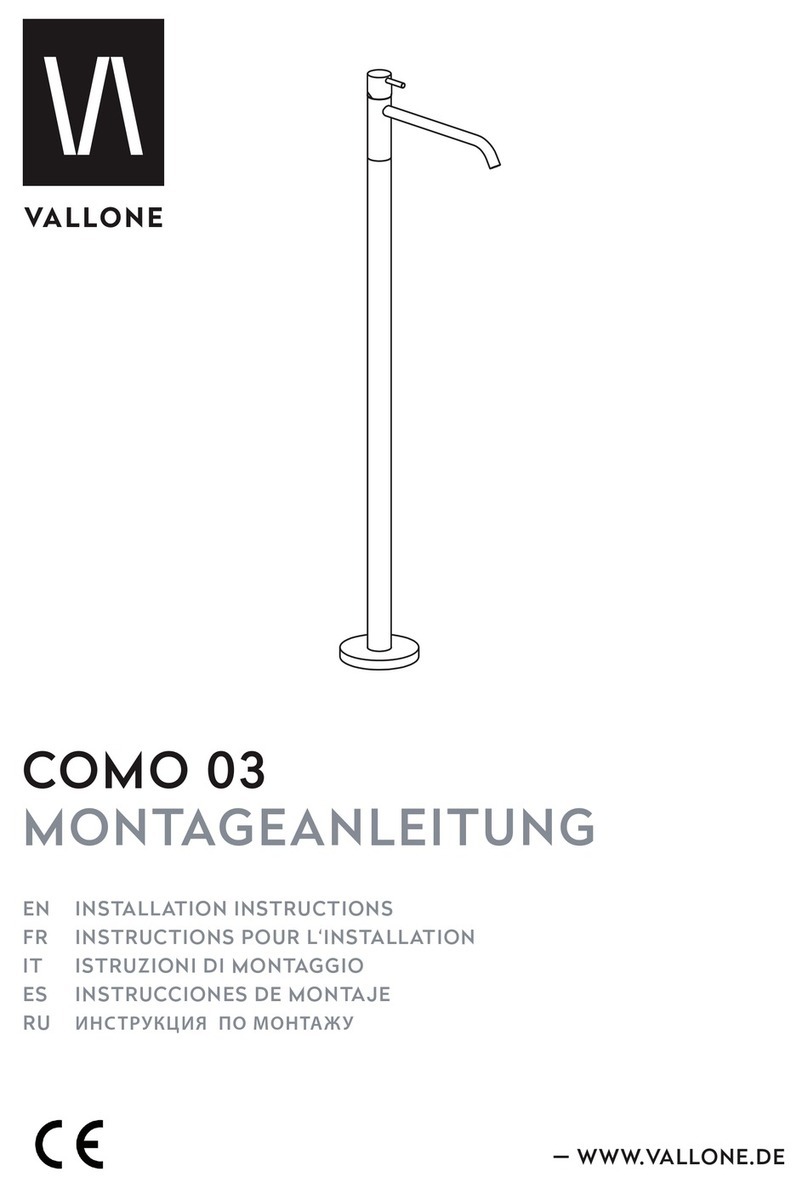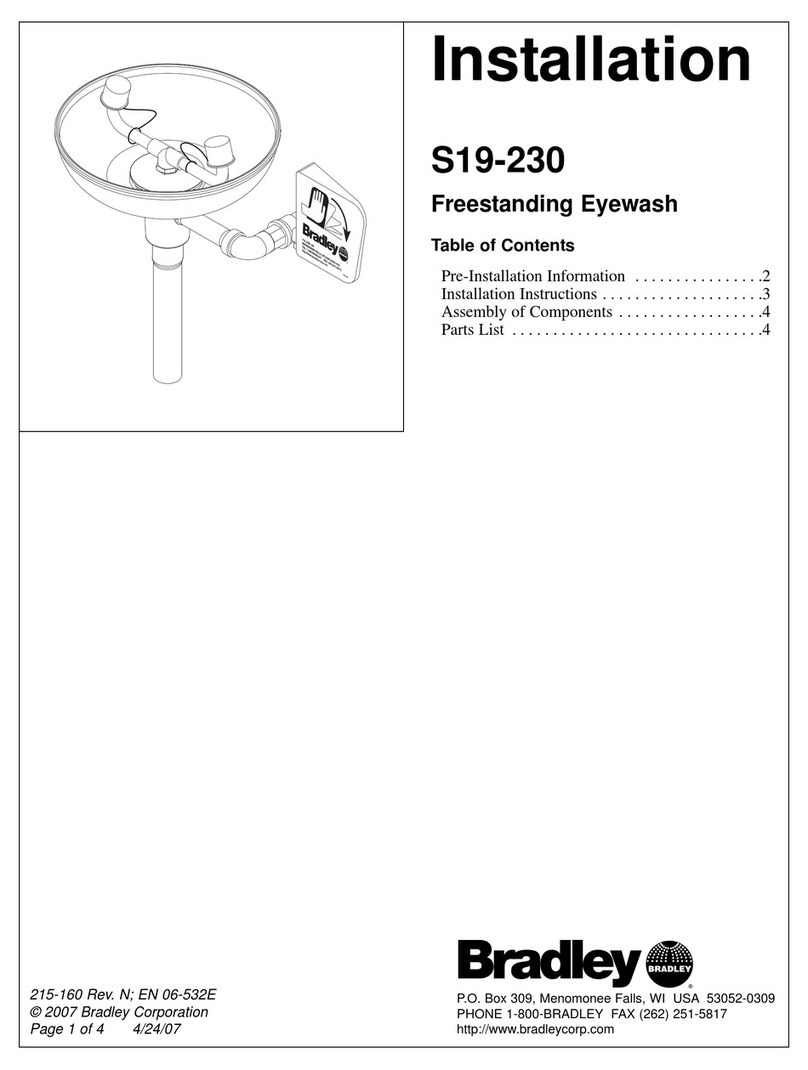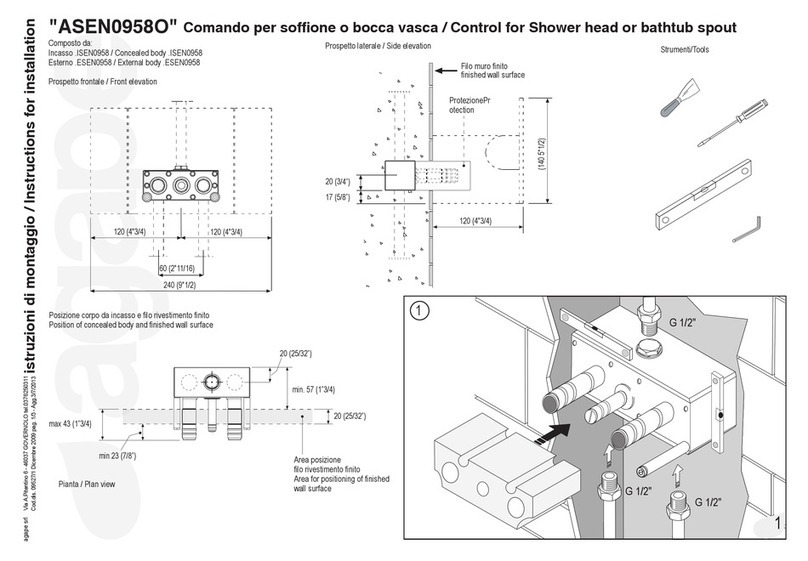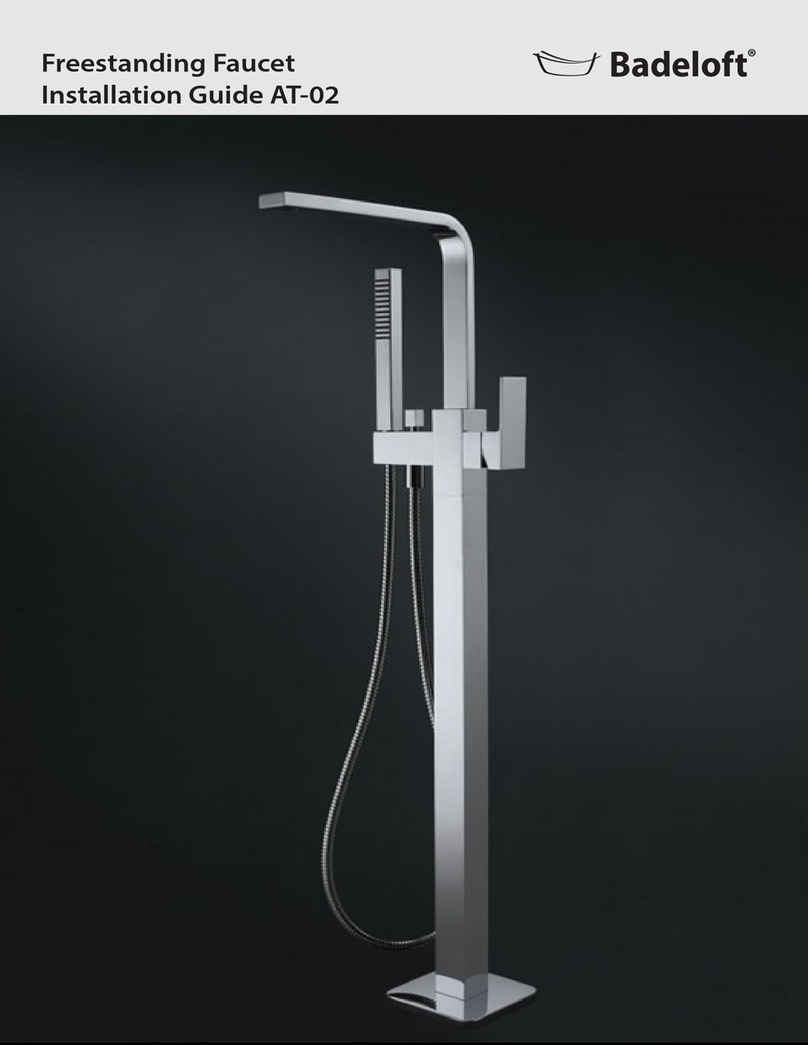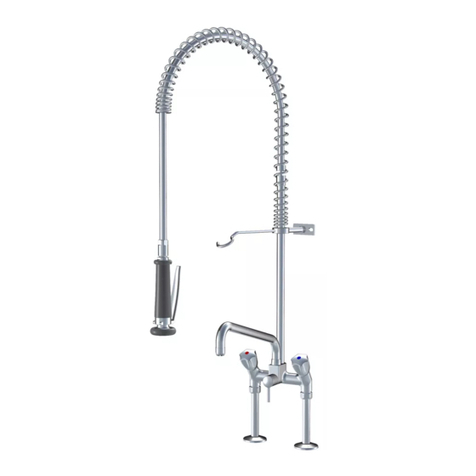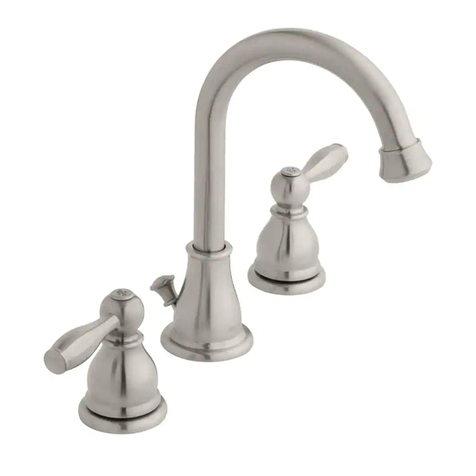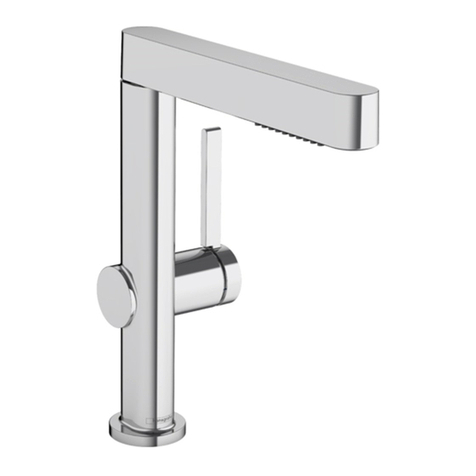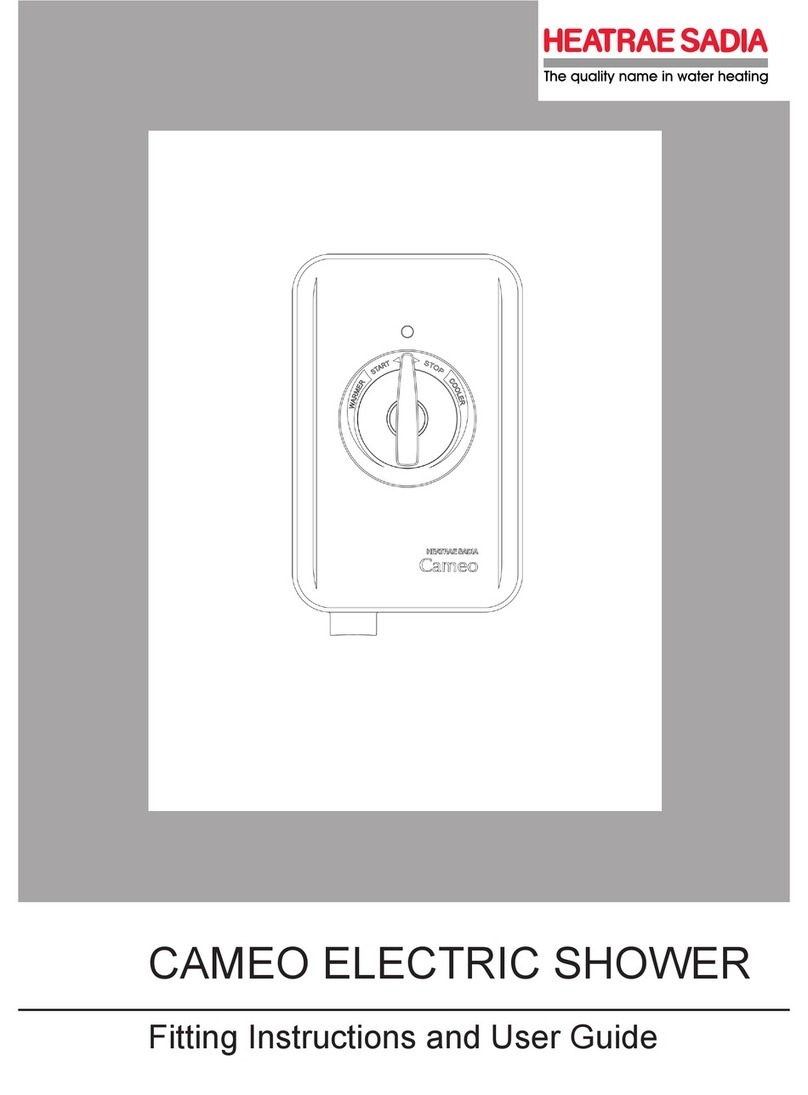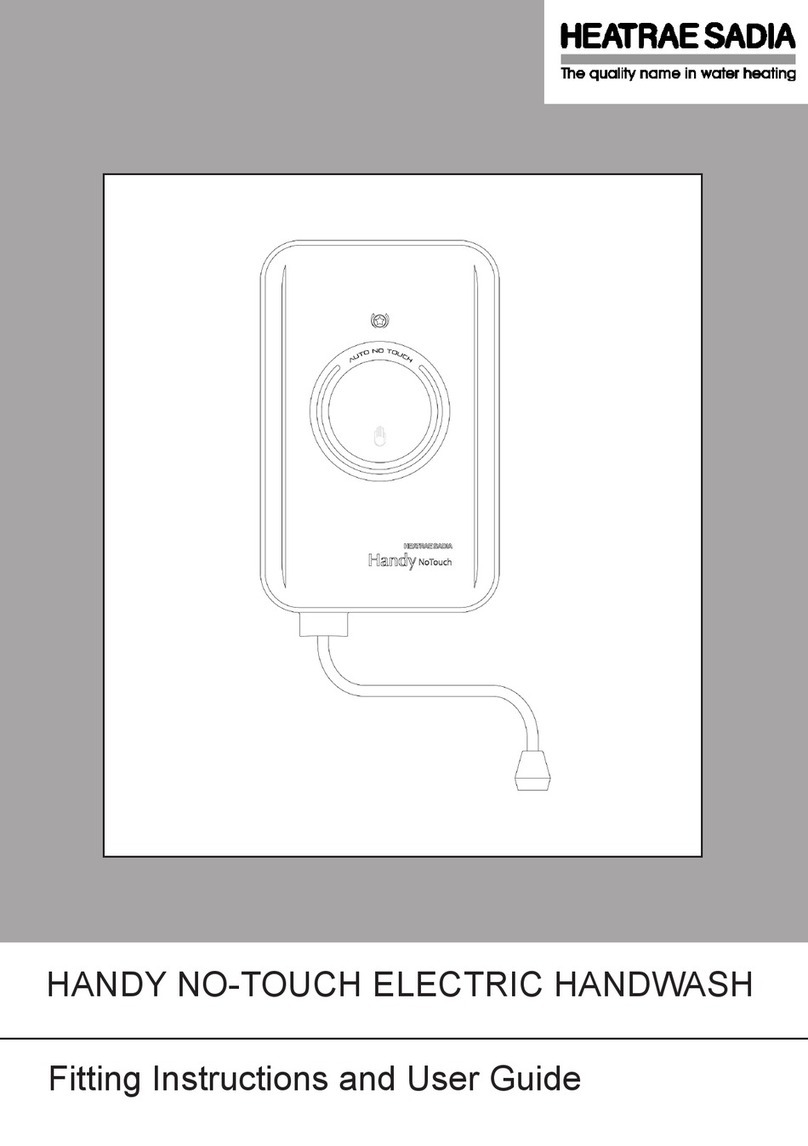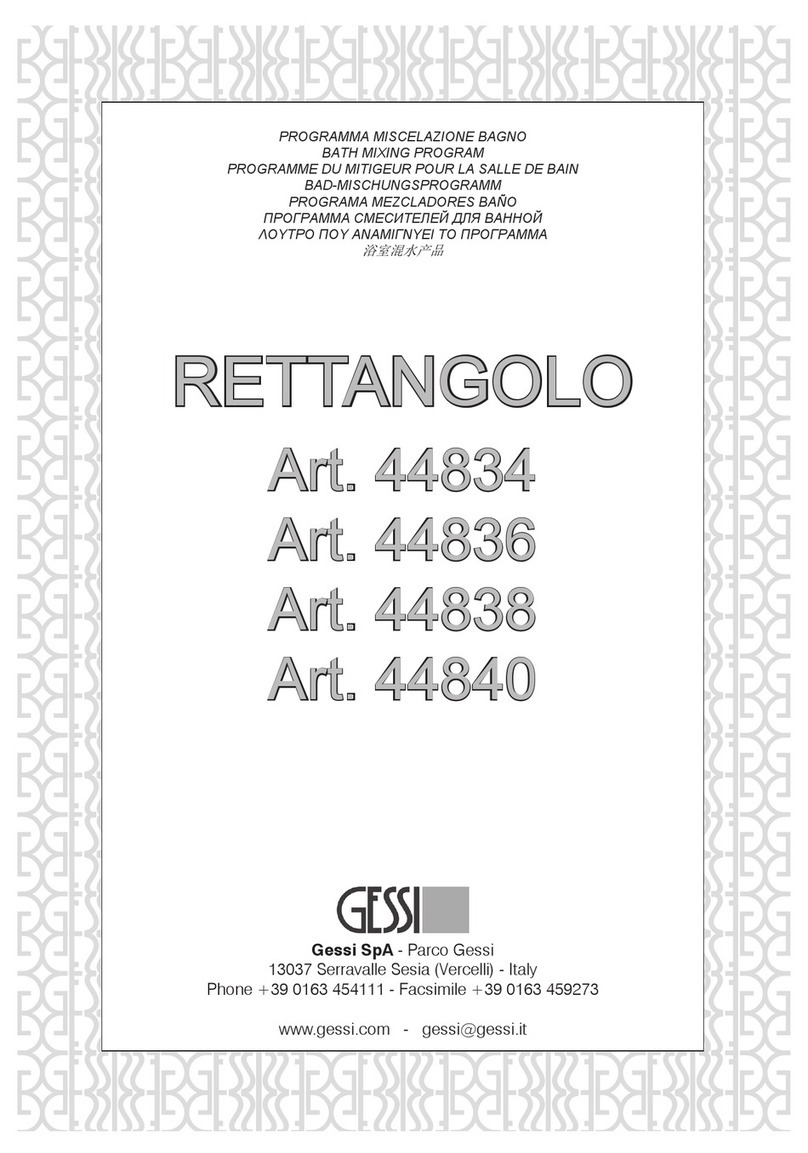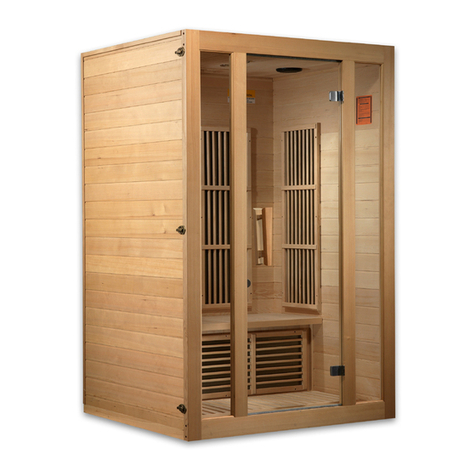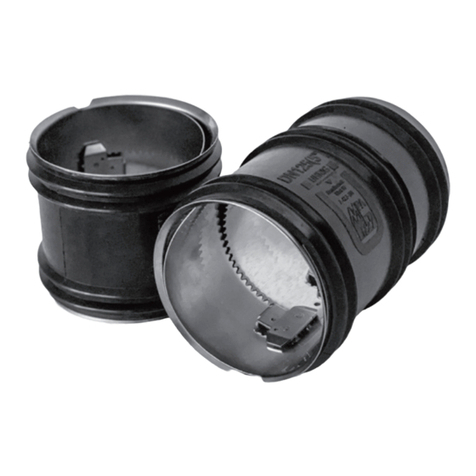11
5.17 Carry out any cutting with pipe cutters
in preference to a hacksaw, to minimise
swarf. Use 15mm compression fittings,
preferably with copper compression rings
(olives), for the connection to the shower
heater.
5.18 Remember to incorporate a servicing
valve and, if required, a double-check
valve - see 3.8 & 3.14.
5.19 Locate your stop cock and turn off
the water supply. Check that the pipe
you intend tapping into no longer carries
water, by opening a tap that the pipe
supplies.
5.20 Make your connection to the pipe. If it
is on a low-lying loop there may be some
water left in the pipe, so be prepared for
some flow of water. Make all joints except
that to the shower heater before flushing.
5.21 It is essential to flush the system
in order to clear debris, particles of
solder and swarf which could enter and
damage components within the
shower heater, prior to connecting to
the shower - see Fig. 7. It may be best
to take the shower off the wall to do this.
5.22 Turn the water off after flushing,
either at the stop cock or by using your
servicing valve.
5.23 Remount the shower firmly and make
the final water connection to it. Turn the
water on again.
5.24 No water will flow from the shower
outlet until the electrics are connected, as
the shower incorporates a solenoid valve.
5.25 Check for leaks in all pipework, and
rectify as necessary.
5.26 When the shower fitting is complete
the riser rail and accessories can be fitted,
please refer to separate instructions in
accessory box.
ELECTRICS
5.27 Design your system as outlined in
Section Three. Lay the cable in your
chosen route, ensuring that you have
ample length.
5.28 Leave the connection to the
consumer unit or switch-fuse until last.
5.29 Remember, when working on
electrical components, ensure they are
not live. If in any doubt, switch off at your
main switch at the fuse board or consumer
unit.
5.30 If you find it necessary to increase
access for fitting the cable, the shower can
be unplumbed at its inlet pipe and
temporarily removed from the wall.
5.31 Feed the cable through the opening
in the backplate below the terminal block.
5.32 Make sure that you route the cable
so that the bottom section of the backplate
will fit in place.
5.33 Ensure that all three screws hold the
shower backplate to the wall firmly.
5.34 Strip the outer insulation sheath back
as required.
5.35 Strip the insulation from the cores and
make connections to the LIVE (L) (brown
or red), NEUTRAL (N) (blue or black) and
EARTH terminal block. The earth wire
must be sleeved green/yellow. Make sure
that the cores of the cable lie tidily and do
not touch any metallic part of the shower.
They must not be under strain. There is no
cable clamp.
5.36 Ensure that the cable does not foul
the area above the bottom removable
section, where the knob gear will fit when
the front cover is fitted into place.





















